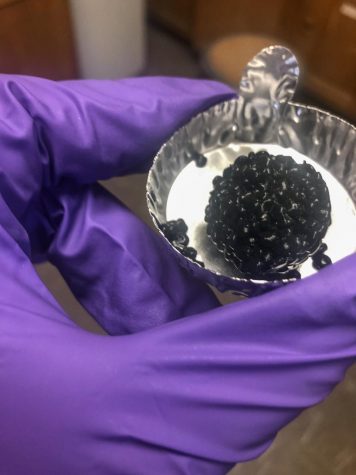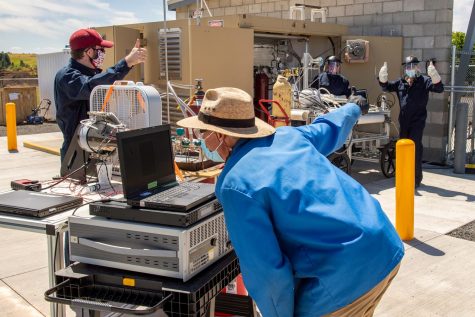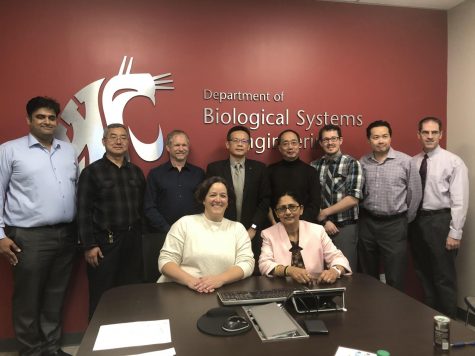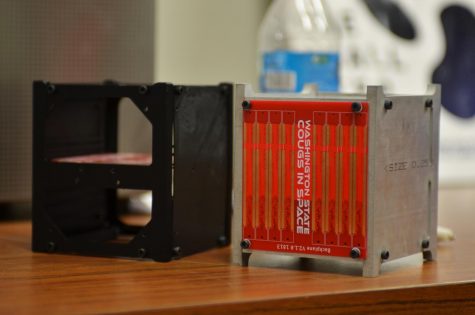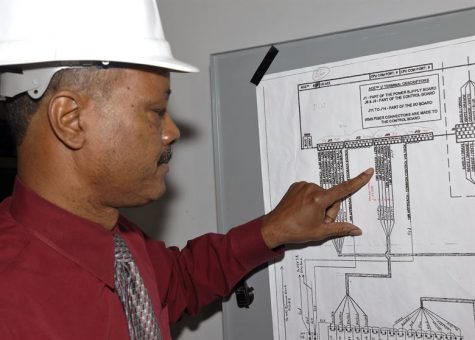WSU researchers tackle carbon-neutral housing
Blueprints will use circular design, emphasize reusable materials
Researchers aim to design structures that can easily be dissembled and reassembled without damaging the material.
October 12, 2022
To fund their research of carbon-neutral housing, WSU, along with the Pacific Northwest National Laboratory and Green Canopy NODE, received a grant of $2.6 million in federal funding and over $250,000 of industry funds, which will be divided among them.
The goal of sustainable housing is to reduce emissions involved in the construction process. At the end of their project, researchers will produce blueprints for circular design housing, which reuses materials from a previous building for a new one, said Adam Phillips, co-investigator and Department of Civil and Environmental Engineering assistant professor.
“[We] are able to keep the materials in circulation for a lot longer, which locks away their carbon when you use biogenic material, which is what wood is,” Phillips said.
Phillips said his team will specialize in the structural and engineering design aspects of the project, or experimental tests.
Normally, the housing process involves using adhesives, such as glue, to hold the house together. The house is then demolished, which releases greenhouse gas emissions into the environment, Phillips said.
He and his team are examining cross-laminated timber, a type of wood in the mass timber family, he said. Mass timber refers to multiple wood panels bound together, through glue, nails, joints or other bonding methods. Mass timber is more robust and can last longer than stick frame construction, a building method where drywall is put on the outside of multiple two-by-fours.
“If you were to try to take [the wood] out of the house, the likelihood is you are going to damage it,” he said. “Drywall is not very strong, and the studs are not going to keep rigidity enough. It is built on-site, and the likelihood of moving it around is low.”
Phillips said a goal is to design connections that can be assembled and disassembled easily, like Legos, without damaging the material. An engineering challenge is not using adhesives, which decrease the usability of the material after deconstruction. Instead, they will use a combination of screws and pins with the joints.
The testing process will involve assembling the homes using CLT and applying weight to the structure, simulating snow or environmental loads. Housing has to withstand a certain amount of weight to meet code reference standards. The team will then disassemble the home and repeat the process, he said.
“If we [assemble and disassemble] it enough times, hopefully we can prove you can actually assemble and reassemble these homes several times over without losing anything,” Phillips said.
Green Canopy NODE is filling the architectural role in the project and are focusing on the research and design of the carbon-neutral housing, creating a blueprint of a carbon-neutral house, said project co-investigator Darrin Griechen, vice president of Product and Technology at Green Canopy NODE.
The blueprints will be designed with CLT and other natural resources in mind to decrease the amount of energy consumed in the construction process, Griechen said.
These resources contain embodied energy, or the sum of all the energy used to harvest, manufacture and transport the material. Operational energy includes the energy used to build the house or structure, he said.
“We need to understand what happens after life, the impact of remodeling,” Griechen said. “We want to make sure when we recycle something we give every opportunity to the future people to reuse that in an equal state; we want to upcycle or site cycle rather than downcycle.”
PNNL is the project lead and is focusing on the management of the project, along with energy, moisture and carbon modeling. They are also focusing on operational performance, said Chrissi Antonopoulos, building scientist at Pacific Northwest National Laboratory.
“Our goal in the design process is to specify materials and approaches for construction that will make the home consume as little energy as possible,” Antonopoulos said. “The way we do that is designing and modeling activities. We will maximize the amount of insulation and air sealing in the design process to ensure that we have a very low load home.”
However, she said people cannot create a home that consumes zero energy. All homes that have appliances or heating and cooling consume energy, but they can reduce energy consumption through solar panels. They can also make sure all electric systems run on clean energy instead of natural gas.
PNNL is also looking at other methods to make housing carbon neutral. Some methods include using plant-based materials for installation, solar panels to create energy, Antonopoulos said.
In essence, the home is carbon-neutral by using sustainable materials during the building process, operating a zero-energy home, deconstructing the home and then using its parts and materials to build a new home, she said.
The two-year project will begin this month, and Phillips said he and the research team hoped to have design drawings by the end of the second year.







